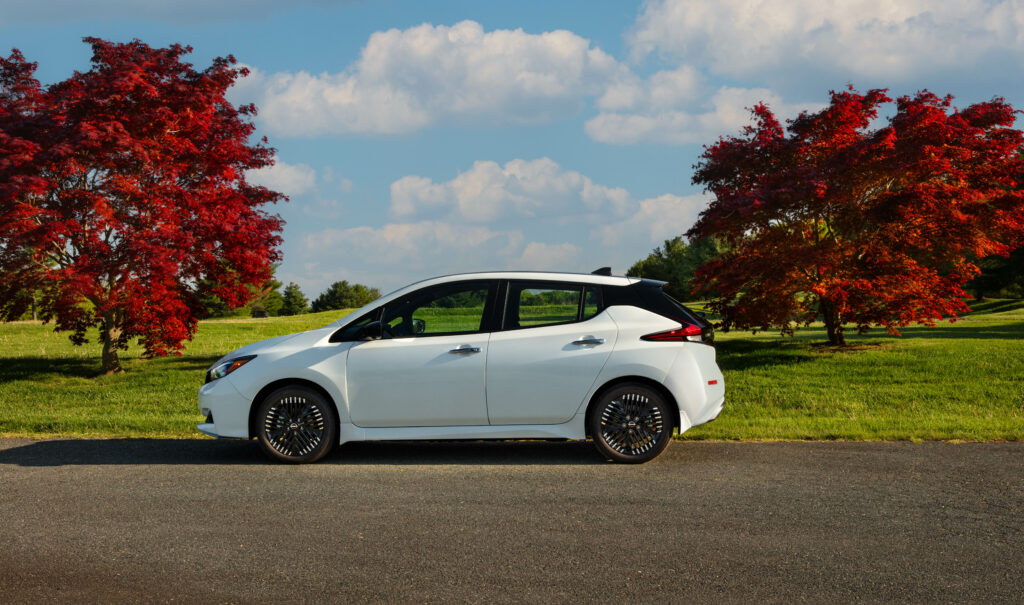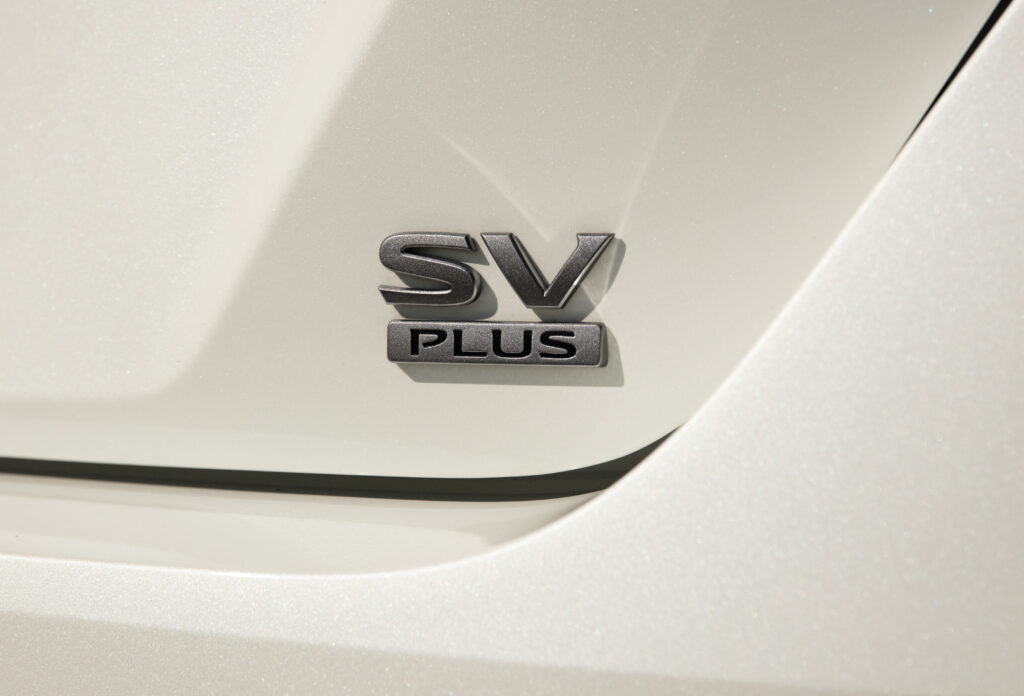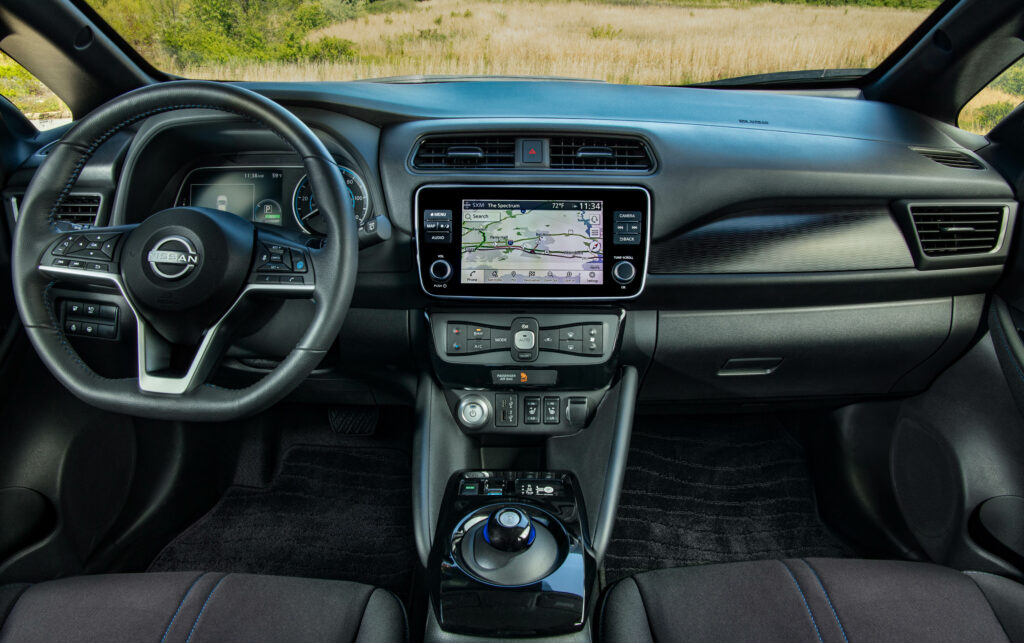
The 2025 Nissan Leaf rolls onto the scene much like a seasoned actor reprising a beloved role, bringing with it the reliable charm and electric efficiency that has made it a staple in the EV market. As the final model year of the second-generation Leaf, codenamed ZE1, it sets the stage for an anticipated transformation slated for the 2026 model year. However, before we dive into the future, let’s appreciate what the 2025 Leaf offers to its loyal fans and new converts alike.

CHECK THIS OUT! Please check out the Nissan Leaf forum here; https://mynissanleaf.com/ and Facebook Group here: https://www.facebook.com/groups/nissan.leaf.group/
Performance, Tech, and Safety
The somewhat refreshed 2025 Leaf offers two battery options: a 40-kWh pack for the S trim and a 60-kWh pack for the SV Plus. The former provides a respectable 149 miles of range, while the latter extends this to 212 miles. These figures ensure that the Leaf remains a viable option for daily commuting and short road trips, albeit without the long-range prowess of some newer competitors.
The S trim’s 110-kW (147-hp) electric motor delivers a smooth and predictable drive, perfect for urban settings and light highway use. The SV Plus ups the ante with a 160-kW (214-hp) motor, offering a more spirited performance that can handle a broader range of driving conditions with ease.

Safety continues to be a cornerstone of the Leaf’s appeal. The 2025 model comes standard with Nissan’s Safety Shield 360 suite, featuring Automatic Emergency Braking with Pedestrian Detection, Blind Spot Warning, Lane Departure Warning, and more. The SV Plus adds ProPILOT Assist and the Intelligent Around View Monitor, enhancing driver confidence with advanced hands-on assistance technologies.
The EV Carefree+ Package
A standout feature for 2025 is the EV Carefree+ package, designed to offer peace of mind to Leaf owners. This package includes three years or 36,000 miles of scheduled maintenance, EV Battery Health Assurance with an eight-year/100,000-mile warranty, and 24-hour roadside assistance for the same duration. This comprehensive support system underscores Nissan’s commitment to a hassle-free ownership experience.
Charging: The Good and the Not-So-Good
One area where the Leaf shows its age is in its charging capabilities. The CHAdeMO charging system, once a pioneer, now feels somewhat outdated in a market increasingly dominated by CCS and Tesla’s Supercharger network. Finding a CHAdeMO charger can be a bit of a treasure hunt, with the process taking about 60 minutes to reach 80% charge for the 40-kWh battery and 40 minutes for the 60-kWh version. The onboard charger, offering 6.6 kW, is more practical for overnight home charging, ensuring your Leaf is ready to go each morning.

Pricing, Federal Tax Credit, and Destination Charge
For those who have come to know and love the Leaf, the 2025 model presents a comforting sense of déjà vu. Nissan North America has kept the prices unchanged from the 2024 model year, with the entry-level S trim starting at $28,140 and the more robust SV Plus beginning at $36,190. While these figures may not surprise, they certainly affirm Nissan’s commitment to maintaining an accessible price point in a market where EV costs can often soar.

It’s worth noting that the 2025 Leaf is not currently eligible for the federal electric vehicle tax credit, a detail that potential buyers should consider. However, any remaining 2024 models still qualify for up to $3,750 in tax credits if purchased and delivered before January 1, 2025. This financial incentive might sway budget-conscious buyers to act quickly.
For the 2024 and 2025 Nissan Leaf models, there is a slight increase in the destination charge. The 2024 Nissan Leaf models have a destination charge of $1,095, while the 2025 models see an increase to $1,140. This destination charge is an additional cost that covers the expenses of transporting the vehicle from the manufacturing plant to the dealership. It’s a common fee applied to new car purchases and is not included in the base price of the vehicle. The increase in the destination charge for the 2025 models reflects adjustments in logistical costs that manufacturers often encounter.
| Model Year | Trim Level | Battery Pack | Motor Power | Range (miles) | Price | Destination Charge | Total Price | Federal Tax Credit Eligibility |
|---|---|---|---|---|---|---|---|---|
| 2024 | Leaf S | 40 kWh | 147 horsepower (110 kW) | 149 | $28,140 | $1,095 | $29,235 | Up to $3,750 |
| 2025 | Leaf S | 40 kWh | 147 horsepower (110 kW) | 149 | $28,140 | $1,140 | $29,280 | Not eligible |
| 2024 | Leaf SV Plus | 60 kWh | 214 horsepower (160 kW) | 212 | $36,190 | $1,095 | $37,285 | Up to $3,750 |
| 2025 | Leaf SV Plus | 60 kWh | 214 horsepower (160 kW) | 212 | $36,190 | $1,140 | $37,330 | Not eligible |
Final Thoughts: Is It Worth Considering the 2025 Leaf?
As we look to the horizon, the upcoming 2026 model year promises a significant shift for the Leaf. The new generation, expected to debut in late 2024, will transition from a five-door hatchback to a sleek crossover, drawing design inspiration from the futuristic Chill-Out concept. This evolution marks a bold step forward, aligning with the growing consumer preference for crossover SUVs and bringing a fresh aesthetic to the Leaf family.
The 2025 Nissan Leaf may not boast revolutionary changes, but it stands as a testament to the model’s enduring appeal and reliability. With its practical range, solid performance, and comprehensive safety features, it remains a sensible choice for those seeking an affordable entry into the world of electric vehicles. As the Leaf prepares for its next evolutionary leap, this final iteration of the second generation ensures that the Leaf legacy continues to shine brightly in the EV landscape.
Whether you’re a longtime Leaf enthusiast or a newcomer to the electric vehicle scene, the 2025 Nissan Leaf offers a familiar yet dependable ride, paving the way for exciting advancements just around the corner. With that said, not offering any massive leaps in terms of features and the fact that it’s not eligible for the Federal Tax make it a tough sell. Only time will tell if people would still go after the 2024 model for the lower price, or wait another year for the entirely new model.





Great assessment. Very useful. Thank you!
An unfortunately very under-appreciated car — acquired by some that actually needed more or different.
But when you know/understand it’s limitations and are willing to work around them – it’s a terrific car and more fun to drive that my Tesla 3 2020.